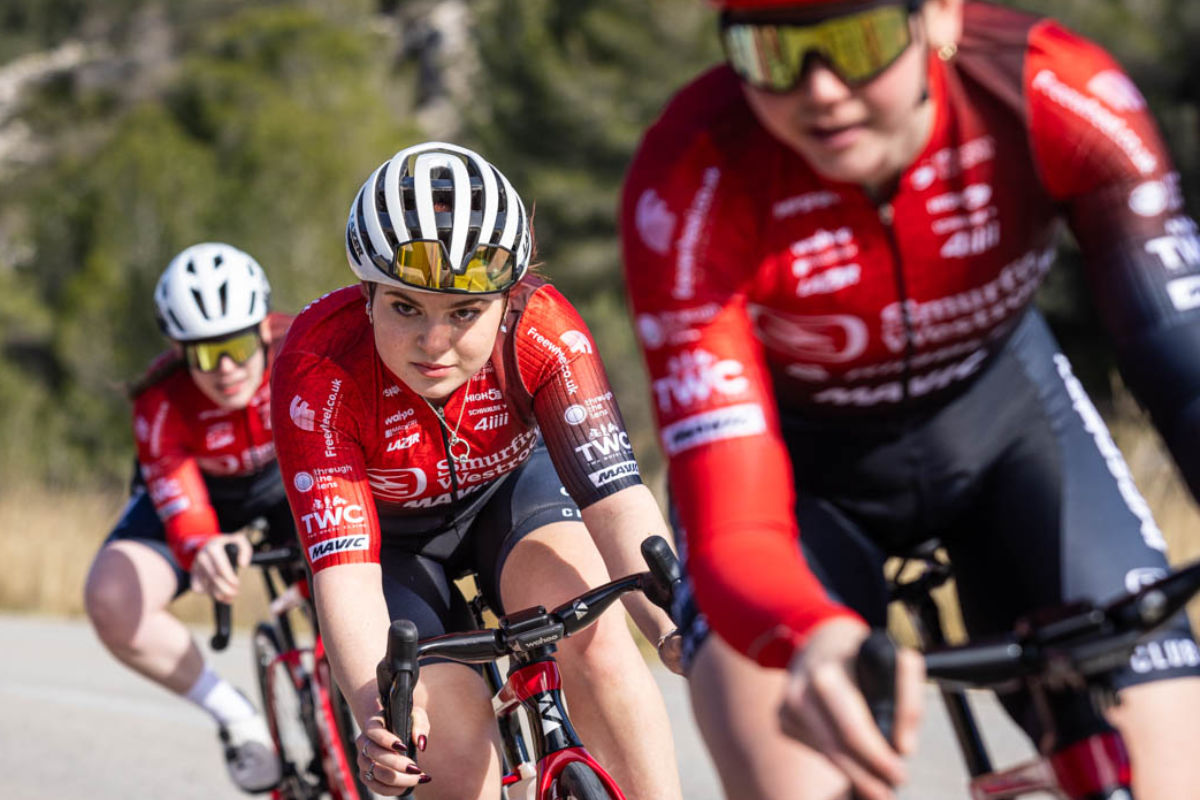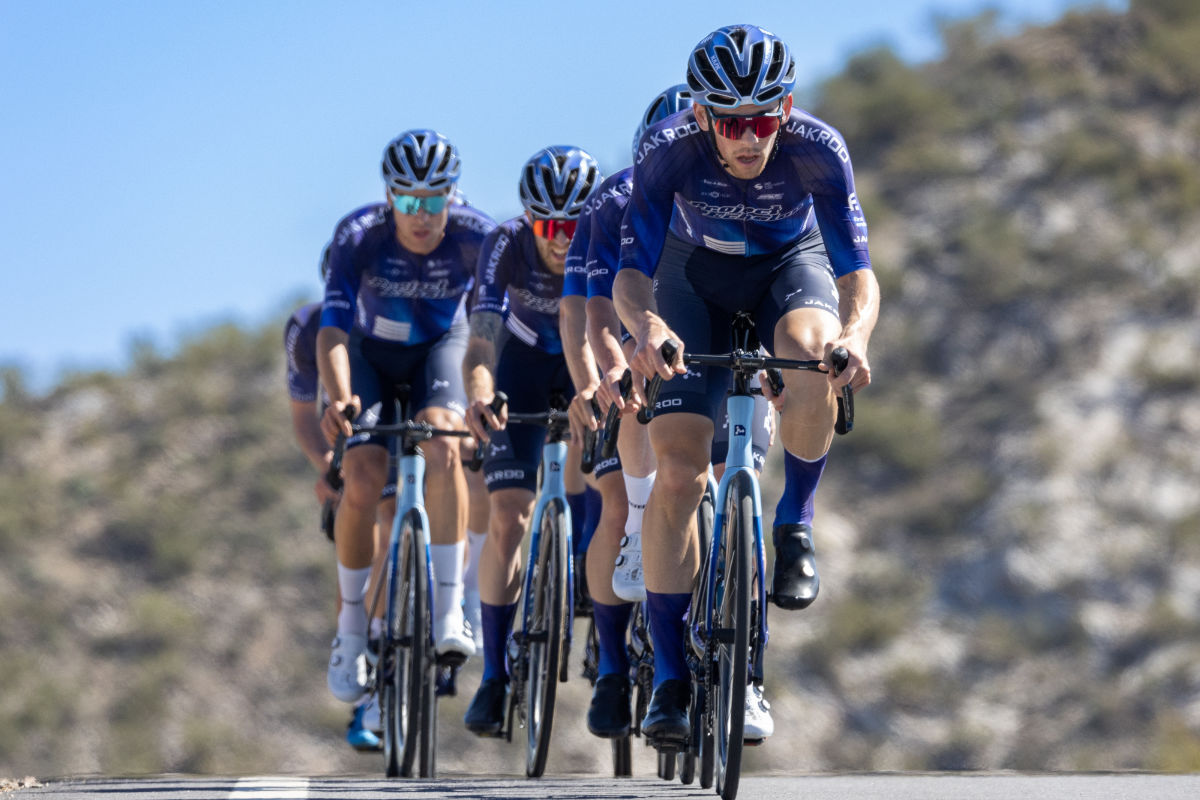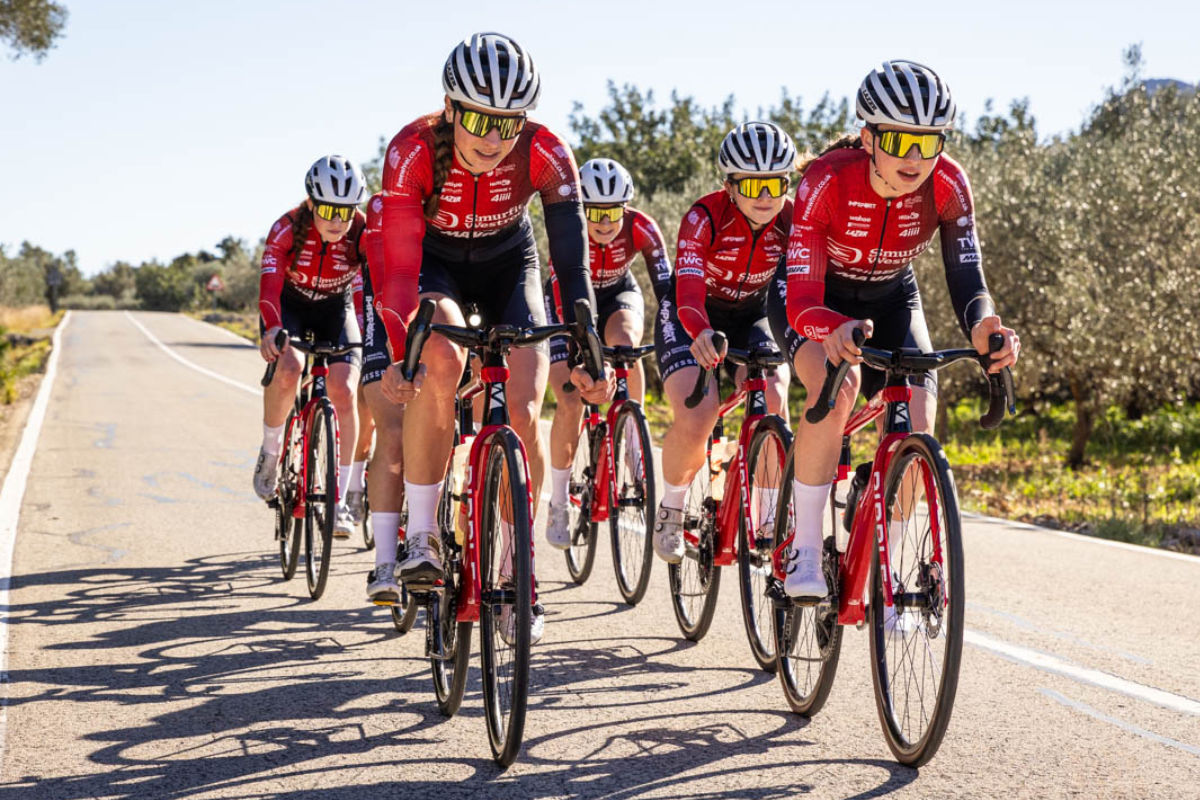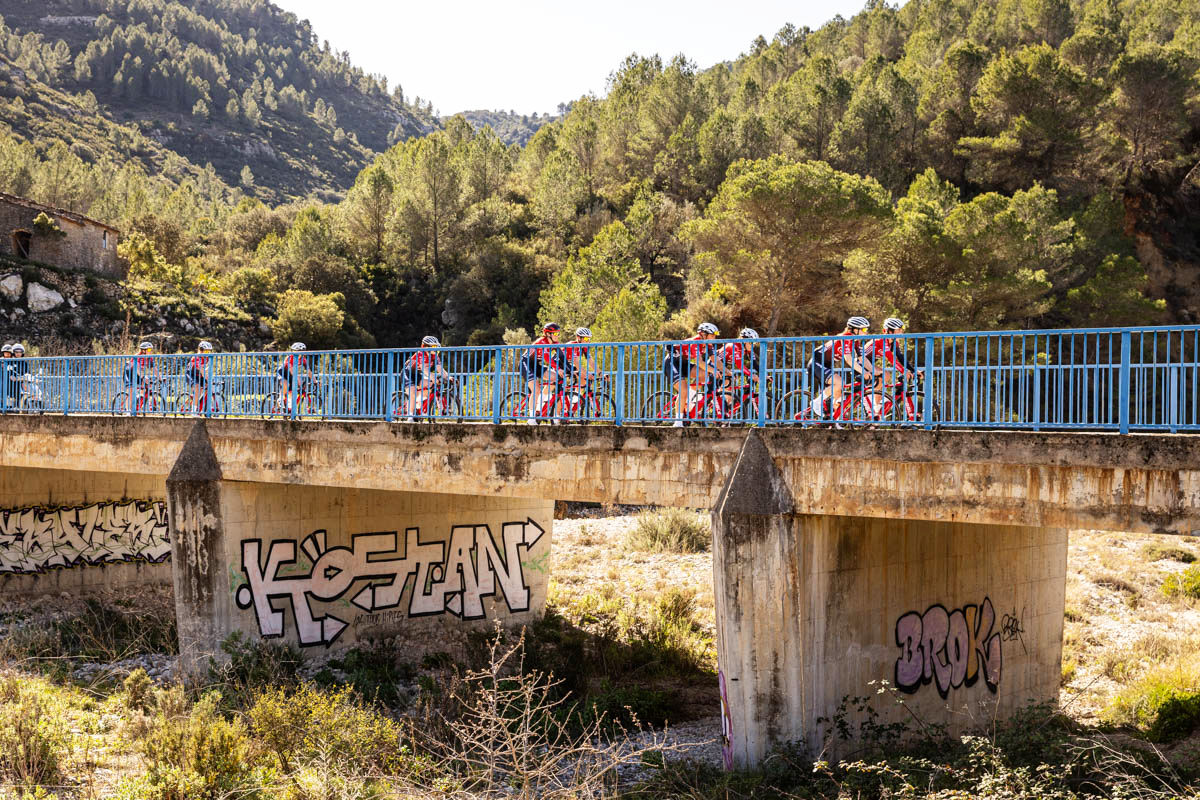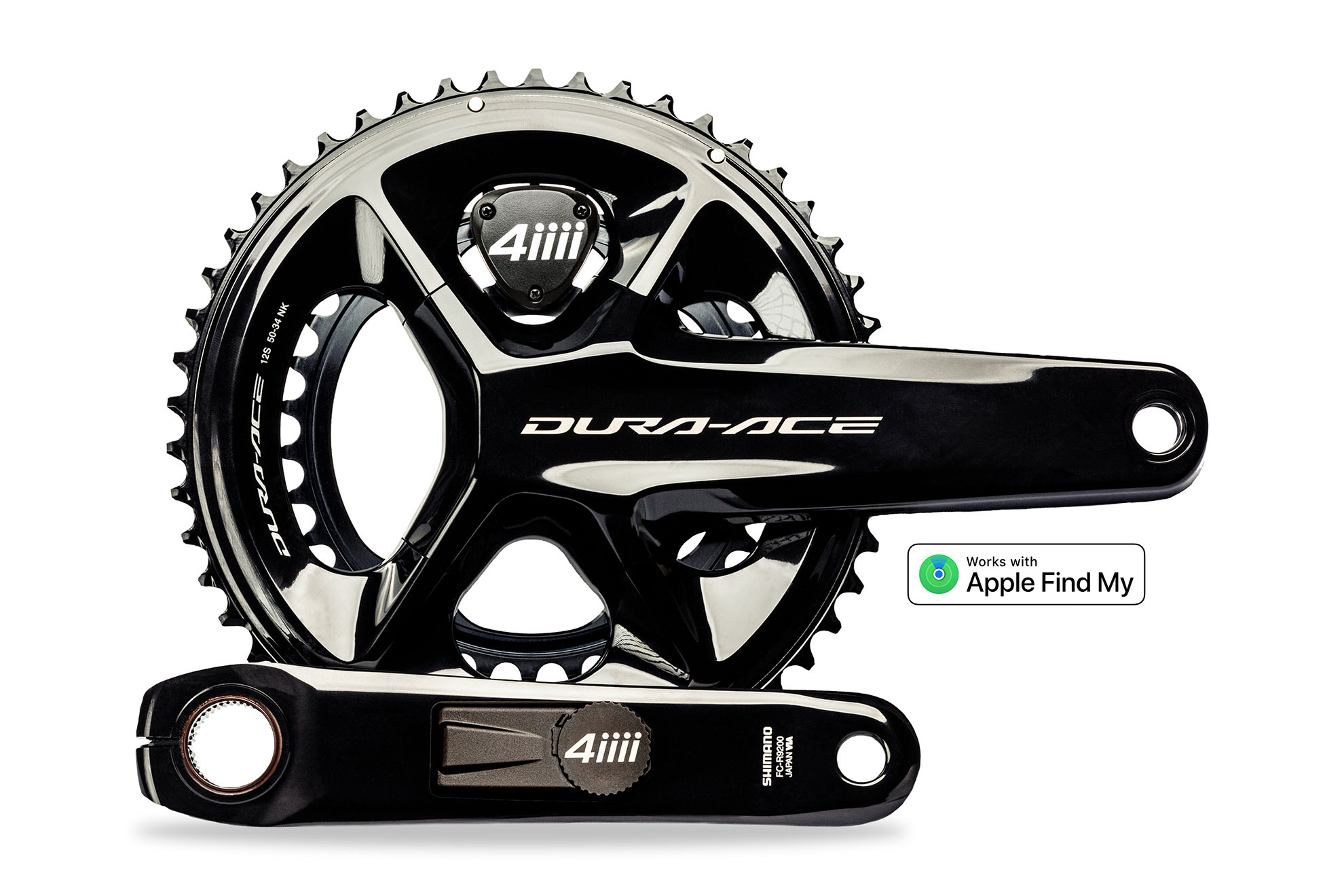Applying Power to the Group Ride
Posted by Andrew Davidson on April 8, 2025
Spring has sprung in the Northern Hemisphere, temperatures are rising, days are getting longer, bikes are being detached from smart trainers, and group rides are being organized. From weekend warriors to elite racers, riders will congregate at cafes and parking lots across the land, decked out in their clubs’ fresh kit, onboard their latest N+1 justifiable purchase, in packs of all sizes, to engage in a shared passion! There are plenty of perks to hitting the open road as a collective, which include but are not limited to, socializing from the saddle, sharing the workload in the wind, friendly competition, discovering new routes, and the ability to borrow a banana or gel when a bonk starts to creep up. The skill development that is a natural byproduct of riding in close proximity to others, is also a hugely beneficial aspect of getting out with others - a skill that can’t be mimicked on the indoor trainer, despite the packs of avatars you’re used to climbing volcanoes with. The dynamics of riding in a bunch will also affect your application of power (watts), so we wanted to compile a list of ways to think about your watts while getting after it with your band of cycling brothers and sisters.
A quick note: In addition to some basic safety checks, that are a great habit to run through pre-ride (tire pressure, quick release/thru-axle tightness, brakes/shifting work), it’s a great time to calibrate your 4iiii power meter. Significant temperature changes can sometimes slightly affect power readings, so doing a quick calibration with your head unit (cycling computer) after your bike’s been outside for 5-10 minutes and adjusted to the temperature is the best way to ensure spot-on data.
4 Ways to Incorporate Watts Into Your Group Ride
On The Front vs In The Wheels
If you were to look at a post-ride power profile of a steady 3-hour solo road ride versus a steady 3-hour group ride, you should notice a difference in the consistency of the power output. Typically, a solo ride will see a relatively constant level of exertion throughout, whether that be an endurance effort, tempo, etc. With the dynamics of a group, however, you’ll likely find a significant degree of fluctuation as you alternate between time spent “on the front” or “in the wheels”. Assuming you’re not allergic to taking a pull at the front of the group (you know who you are!), you’ll be rotating through with the other riders, sharing the work of cutting into the wind, before pulling off and slotting back into the line of riders. The difference in power output between these two positions in the group is huge! A rider sitting in the slipstream of the draft can maintain the same speed while putting out 30% less power…
Sign Sprints
Sometimes you’ve just got to open the throttle all the way… and what better excuse than the age-old tradition of sign sprints! The rules are pretty self-explanatory; step one: challenge a riding partner to spring, step two: pick sign, step three: sprint to that sign as fast as you can! An element of competition can push you to dig that little bit deeper, and perhaps push your PB for 5, 10, or 20-second power to a new level. It’s a great way to incorporate some intensity into a ride, and ideally claim some bragging rights over your buddies. Like anything you do on the open road, applying safety should always be the first consideration. It’s best to do sign sprints on quiet roads and only when the coast is clear of vehicles.
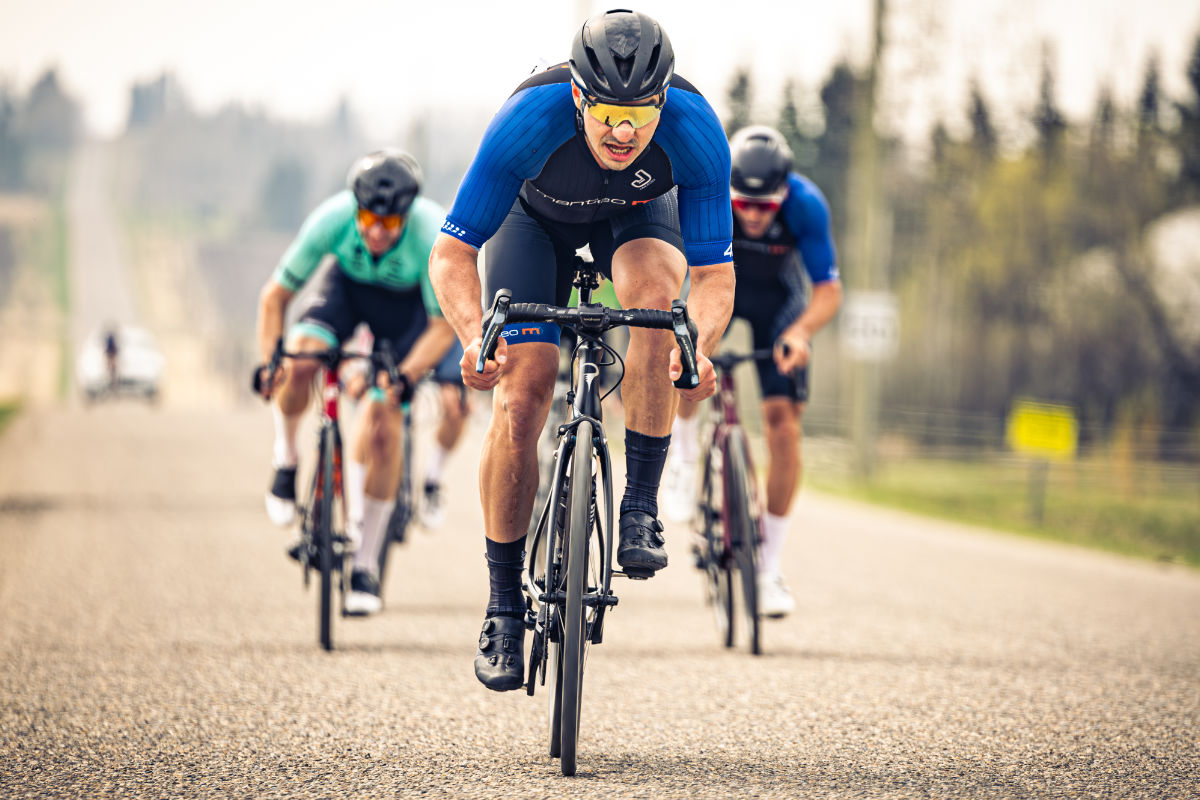
Sign sprints for bragging rights can add a friendly competitive element. Foto de @davidfmiller
Taking Notes on Wind
If you’re newer to riding in groups and still discovering the significant benefits and watt-savings of riding in the draft of others, power data can be a useful reference point. A common issue to encounter with new roadies is a lack of comfort riding too close to the back wheel of a rider in front of them, which is an understandable and natural self-preservation instinct. However, this can lead to taking on more of the wind resistance than they need to, which could be minimized by closing the gap to the rider(s) in front. Ideally, you can find yourself a group of riders whose skills and judgement you trust and can challenge yourself to close the distance from your front wheel to their back wheel and notice the increased slipstream effect - seeing your watts diminish slightly, as you sit more tightly in the slipstream pocket. Another great use of this concept is to be able to find the wind-sheltered position to ride in when riding in crosswinds. As wind directions change, so should your position, relative to the riders you’re drafting - so riding directly behind the rider in front of you, when the wind is coming directly from your left or right side, isn’t going to offer much benefit. Assuming the road space allows, you can experiment with riding on the left or right hip of the rider you’re drafting, to feel the slipstream effect and see your watts decrease, while still keeping pace. These are great skills to develop, especially for any aspiring racers, as you’ll always be looking to conserve power, for when the big moves happen!
Calories Burned / Calculate Nutrition
There are few things more humbling than setting out for a longer group ride, full of energy and excitement, only to find yourself a victim of a dreaded “bonk” in the last hour - begging your ride partners for an emergency banana, while seeing stars. It’s happened to the best of us, but you don’t want to make a habit of being “that guy/gal” who repeatedly underfuels during a ride and needs to lean on others for snacks, to make it home. Alternatively, you probably don’t want to be riding with excessive amounts of ride food that never gets eaten, taking up valuable real estate in your jersey pockets. Having a solid idea of your caloric needs is a great way to dial in exactly what you need to bring with you on any length of outing. Riding with a power meter (and ideally a heart rate monitor) will allow you to track your kilojoules, and over time, form a solid idea of what your body needs to be riding strong in the homestretch, and not wilting and wobbling your way home.
Hopefully, you can incorporate some of these tips into your group rides this season and continue your evolution as a skilled and savvy rider!
Check out our line of training tools and add another layer of insight to your rides this season: 4iiii Power Meters
